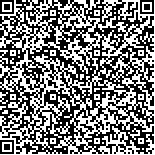| 引用本文: | 吕昂,王海红,俞文英,张欢欢,方杰,金晓音,余陈欢.石荠苧总黄酮对博来霉素致大鼠肺纤维化的治疗作用及其机制[J].中国现代应用药学,2017,34(4):488-491. |
| LYU Ang,Wang Haihong,Yu Wenying,Zhang Huanhuan,Fang Jie,Jin Xiaoyin,YU Chenhuan.Effects of Total Flavonoids from Mosla Scabra on Bleomycin-induced Pulmonary Fibrosis of Rats and It's Mechanism[J].Chin J Mod Appl Pharm(中国现代应用药学),2017,34(4):488-491. |
|
| |
|
|
| 本文已被:浏览 2252次 下载 1212次 |

码上扫一扫! |
|
|
| 石荠苧总黄酮对博来霉素致大鼠肺纤维化的治疗作用及其机制 |
|
吕昂1,2, 王海红1,2, 俞文英3, 张欢欢3, 方杰3, 金晓音3, 余陈欢3
|
|
1.南京医科大学附属杭州医院药学部, 杭州 310006;2.杭州市第一人民医院药学部, 杭州 310006;3.浙江省医学科学院, 杭州 310013
|
|
| 摘要: |
| 目的 观察石荠苧总黄酮(MSF)对博来霉素致大鼠肺纤维化的干预作用,并初步探讨其机制。方法 60只SD大鼠随机分为正常组,模型组,阳性对照组,MSF低、中、高剂量组,气道注射博来霉素(5 mg·kg-1)制备大鼠肺纤维化模型。造模14 d后,阳性对照组给予2 mg·kg-1醋酸泼尼松,MSF低、中、高剂量组分别给予40,80,160 mg·kg-1,正常组和模型组给予等量生理盐水,每天1次,连续28 d,于造模42 d后检测血清超氧化物歧化酶(SOD)、谷胱甘肽(GSH)、白细胞介素-4(IL-4)、肿瘤坏死因子-α(TNF-α)、转化生长因子-β1(TGF-β1)和透明质酸(HA)含量,Masson染色观察纤维化发展情况,免疫组化检测α-肌动蛋白(α-SMA)表达,蛋白印迹检测核因子-κB(NF-κB)、TGF-β1、TNF-α、Smad2/3和pSmad2/3表达情况。结果 与模型组相比,MSF干预后大鼠血清SOD、GSH活性显著增加;IL-4、TNF-α、TGF-β1和HA含量显著降低(P<0.01);α-SMA表达明显下调,纤维化程度减轻;NF-κB、TNF-α、TGF-β1、Smad2/3和pSmad2/3表达显著降低(P<0.01)。结论 MSF对肺纤维化具有一定的治疗作用,其机制可能与抑制NF-κB和TGF-β1通路信号转导有关。 |
| 关键词: 石荠苧总黄酮 肺纤维化 博来霉素 NF-κB TGF-β1 |
| DOI:10.13748/j.cnki.issn1007-7693.2017.04.002 |
| 分类号: |
| 基金项目:国家自然科学基金项目(81673583,81603368);浙江省自然科学基金项目(LQ15H280007),浙江省中医药科技计划项目(2016ZA042) |
|
| Effects of Total Flavonoids from Mosla Scabra on Bleomycin-induced Pulmonary Fibrosis of Rats and It's Mechanism |
|
LYU Ang1,2, Wang Haihong1,2, Yu Wenying3, Zhang Huanhuan3, Fang Jie3, Jin Xiaoyin3, YU Chenhuan3
|
|
1.Department of Pharmacy, Affiliated Hangzhou Hospital, Nanjing Medical University, Hangzhou 310006, China;2.Department of Pharmacy, First People's Hospital of Hangzhou, Hangzhou 310006, China;3.Zhejiang Academy of Medical Sciences, Hangzhou 310013, China
|
| Abstract: |
| OBJECTIVE To investigate protective effects of total flavonoids from Mosla scabra(MSF) on bleomycin- induced pulmonary fibrosis of rats, and explore its preliminary mechanism. METHODS Sixty SD rats were divided into six groups randomly: normal group, model group, positive control group, MSF high-dose, middle-dose and low-dose treatment group. Pulmonary fibrosis in rats was induced by intratracheal instillation of belomycin (5 mg·kg-1). After challenge of 14 d, the two treatment groups were given MSF at the doses of 40, 80 and 160 mg·kg-1 respectively, while positive control group was treated with prednisone acetate (2 mg·kg-1). Normal group and model group were treated with saline once a day for 28 d. The activities of SOD and GSH, the levels of IL-4, TNF-α, TGF-β1 and HA in serum were detected after molding 42 d. The histological examination was performed with Masson stain. The expression of α-SMA was detected by immunohistochemistry analysis while the expression of NF-κB, TNF-α, TGF-β1, Smad2/3 and pSmad2/3 proteins was detected by Western-blotting analysis.RESULTS Compared with the model group, the activities of SOD and GSH were increased significantly whereas levels of IL-4, TNF-α, TGF-β1 and HA in serum were decreased significantly after MSF treatment (P<0.01). The expression of a-SMA was down-regulated. The degree of fibrosis was reduced. The protein expressions of NF-κB, TNF-α, TGF-β1, Smad2/3 and pSmad2/3 were also significantly decreased (P<0.01). CONCLUSION MSF can ameliorate pulmonary fibrosis through inhibition of NF-κB and TGF-β1 signaling. |
| Key words: total flavonoids from Mosla scabra pulmonary fibrosis bleomycin NF-κB TGF-β1 |
|
|
|
|
